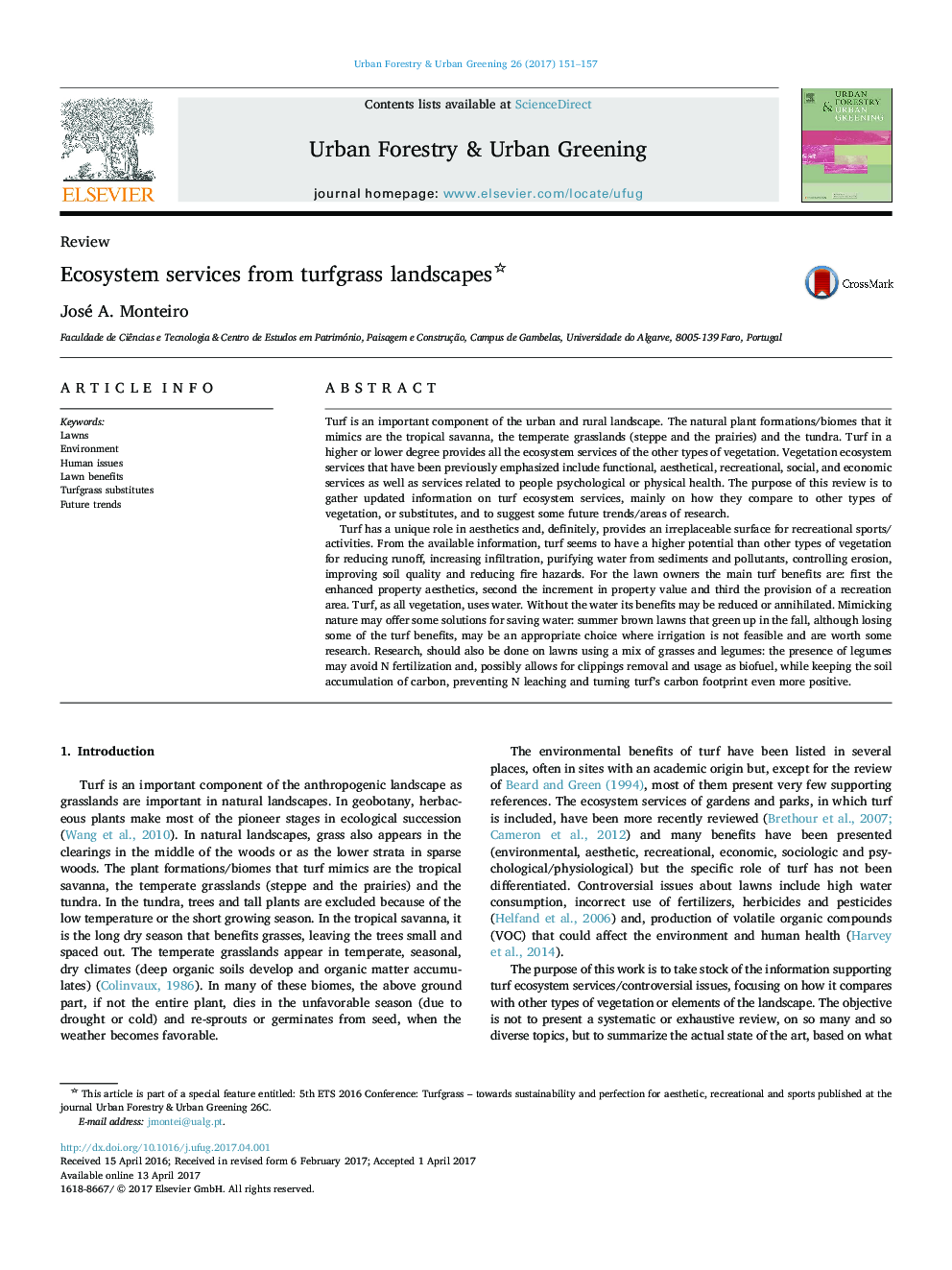| کد مقاله | کد نشریه | سال انتشار | مقاله انگلیسی | نسخه تمام متن |
|---|---|---|---|---|
| 6461797 | 1421864 | 2017 | 7 صفحه PDF | دانلود رایگان |
- Turfgrass in a variable degree has all the benefits of the other types of vegetation.
- It has a unique role in aesthetics.
- It provides an irreplaceable surface for recreational/sport activities.
- Research is needed on summer brown lawns that green up in the fall.
- Research should be done on lawns using a mix of grasses and legumes.
Turf is an important component of the urban and rural landscape. The natural plant formations/biomes that it mimics are the tropical savanna, the temperate grasslands (steppe and the prairies) and the tundra. Turf in a higher or lower degree provides all the ecosystem services of the other types of vegetation. Vegetation ecosystem services that have been previously emphasized include functional, aesthetical, recreational, social, and economic services as well as services related to people psychological or physical health. The purpose of this review is to gather updated information on turf ecosystem services, mainly on how they compare to other types of vegetation, or substitutes, and to suggest some future trends/areas of research.Turf has a unique role in aesthetics and, definitely, provides an irreplaceable surface for recreational sports/activities. From the available information, turf seems to have a higher potential than other types of vegetation for reducing runoff, increasing infiltration, purifying water from sediments and pollutants, controlling erosion, improving soil quality and reducing fire hazards. For the lawn owners the main turf benefits are: first the enhanced property aesthetics, second the increment in property value and third the provision of a recreation area. Turf, as all vegetation, uses water. Without the water its benefits may be reduced or annihilated. Mimicking nature may offer some solutions for saving water: summer brown lawns that green up in the fall, although losing some of the turf benefits, may be an appropriate choice where irrigation is not feasible and are worth some research. Research, should also be done on lawns using a mix of grasses and legumes: the presence of legumes may avoid N fertilization and, possibly allows for clippings removal and usage as biofuel, while keeping the soil accumulation of carbon, preventing N leaching and turning turf's carbon footprint even more positive.
Journal: Urban Forestry & Urban Greening - Volume 26, August 2017, Pages 151-157
